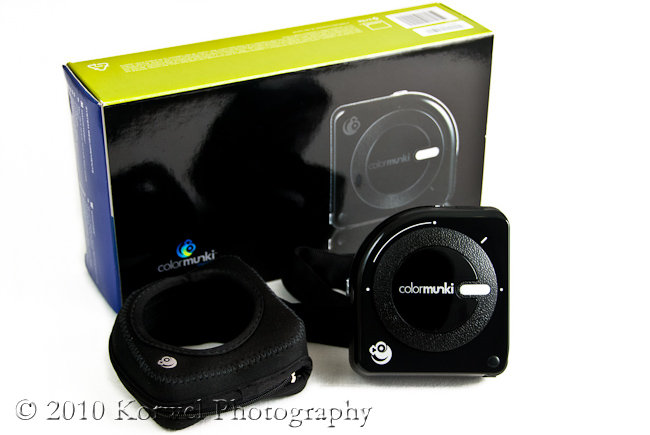Color chase
Browsing through the Internet there it usually doesn’t take long to get hit by photographers’ mantra:
“Calibrate, calibrate, calibrate!”
So very soon almost every wannabe pro gets to the point ‘I need a color calibrator!’ thinking that the very second he or she calibrates their hardware it will magically transform them into great shooters. That obviously is not the case. There is however one situation when having a calibrating device is in my opinion a must. It when you have two (or more) monitors connected to the same computer. There isn’t many things more annoying than seeing your picture changing colors when you push it around your desktop between different monitors.
So few weeks ago I spoke to Santa and he was kind enough to bring us this neat device:
It’s called ColorMunki and it’s supposed to solve all color correcting problems you may ever encounter. It’s power comes from the fact that unlike most other devices available on the market it’s actually fully functional spectrophotometer. Which means that it can measure not only monitors (or other light emitting devices) but is also capable of measuring passive colors like those on image you just printed out.
But the most important feature for me is monitor calibration.
How does it work?
I won’t describe whole process in detail here as there is plenty of tutorials around the web (even detailed video on YouTube). Instead I’ll just stick to what I do and don’t like in this little device.
The most important positive thing about it is… that it works. Which only at first may seem to be obvious but from my previous experience with different color calibrators it not always is so. And I don’t mean that you can’t calibrate the monitor using them. You can, but it closer resemble engineering process than quick and painful task you can don every Monday to make sure your monitor profile is up to date. And the software bundled with ColorMunki does that job perfectly. The software checks your monitor’s current setting, asks you to adjust contrast or brightness level if needed (usually you have to set them during initial calibration, then they don’t change that much if you don’t touch them) and then does it’s job in a matter of seconds. No unneeded options (those are hidden if you really want to play), just few clicks and your monitor is done.
What I do not like about it? The most annoying thing is the device’s design. As you can see on the picture it’s built as a rotating ring/button/circle inside bigger enclosure. You’re supposed to turn the whole inside ring between different steps of calibration process. The problem is that one side of that ring actually works as a button activating currently selected function of the device. I find it very difficult to turn the ring without pressing the button. You have to constantly remember about it otherwise the software will try to start it’s job while the device is obviously not ready causing errors to pop up. The other thing I’ve notice is that it’s very important to reset any possible monitor settings to the factory defaults, otherwise you may get strange results. That thing was actually mentioned on the X-Rite website’s but I’ve read that after I was done with the job.
In the end it took me less that 45 minutes to calibrate all four monitors we have and now we can make great picture (year right) and repeat after the rest of the gang:
“Calibrate, calibrate, calibrate!”
